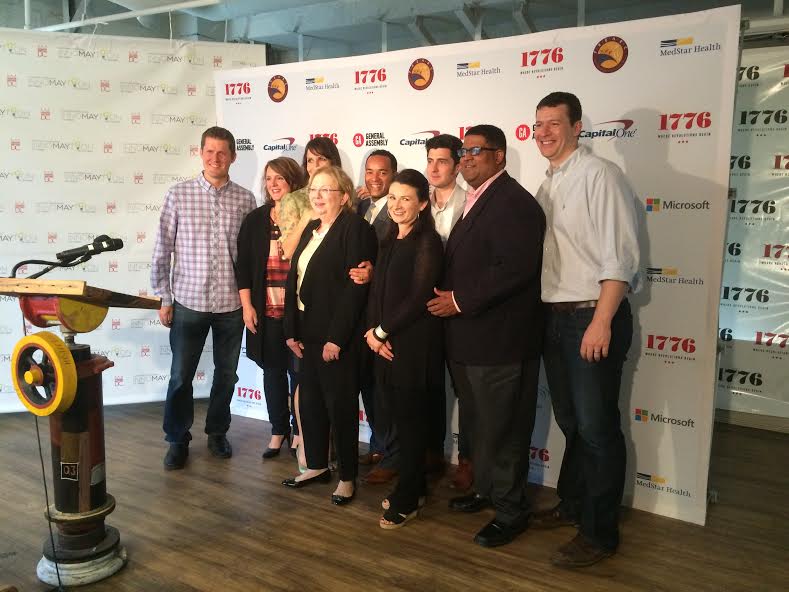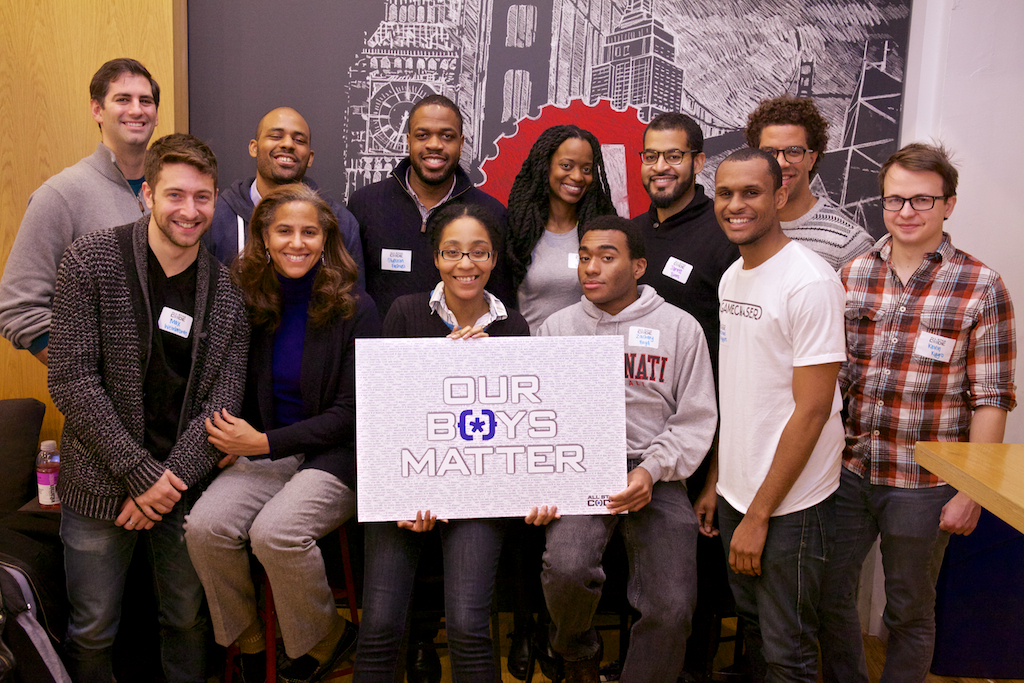YOUR UNTAPPED PROFESSIONAL POTENTIAL

How GA’s new income-share agreement program is removing barriers to education and career change.
Embarking on a career change is a major investment. To say it’s a tough endeavor is an understatement, as it usually requires time, money, and effort to bridge skills gaps and make inroads in a new field or profession.
At General Assembly, we’ve helped over 13,000 individuals with finding a job and launching new careers through our full-time Immersive programs in coding, data, and UX design. GA courses aren’t cheap, but they have a high return on investment and are specifically designed to prepare students to be successful and secure high-wage, high-potential roles as web developers, data scientists, and UX designers.
However, many students can’t financially afford this education out of pocket. About 40% of our full-time students use third-party funding sources — including loans, scholarships, GI Bill® benefits, and government programs — to attend GA. There are more seeking who would like to do the same, but half of those who apply for loans get turned down, and our pool of scholarship funding is not big enough to meet demand.
The fact of the matter is that many of our students already have debt from past education or credit cards that affects their ability to secure new financing. Today, the typical college student borrower graduates with an average of $22,000 in debt. A recent study revealed that over 30% of recent student borrowers are facing serious struggles with repaying debt loads. The combination of existing repayment obligations and the looming risk of default leaves many adults with extremely limited funds to devote to continuing education. It’s a frustrating cycle — individuals are stuck in low-paying jobs they don’t love, but they can’t afford the education that will fast-track them into a new line of work.
At GA, we never want a student’s financial struggles to stand in the way of their motivation to break into a new profession. In order to create more access to our rewarding programs, we sought out new ways for career-changers to financially fund their education.
One concept that caught our attention was income share agreements (ISAs), a model of income-based repayment that’s gaining traction among education and training providers. After nearly two years designing this program, we’re excited to launch Catalyst, GA’s ISA program. Since many people are curious about ISAs, we wanted to share some insight around why they’re a viable option for many students pursuing this program, regardless of their income, credit history, or background.
You can read about how and why we created the Catalyst program in more detail in our white paper, Untapped Potential.
How GA’s Catalyst ISA Program Works
The gist of the Catalyst program is this: Students can accomplish taking a full-time GA Immersive course in web development, data science, or UX design at no upfront cost. After they graduate and land a job earning at least $40,000 annually, they’ll start paying back 10% of their income over 48 monthly payments.
We chose this income share amount because it’s comparable to what students might pay for a loan, based on our typical starting salaries. According to PayScale, average starting salaries for web developers are $54,365 nationally, and data from Climb Credit, one of our loan partners, shows that GA graduates report median starting salaries of $60,000 after taking an Immersive course.
Payments are maxed out at 1.5 times the initial cost of tuition (currently about $15,000), meaning that higher earners may end up paying as much as $22,425 total, while lower earners will pay less. We’re working with Vemo Education, the largest provider of ISAs in the United States, to manage the program’s day-to-day operations and administration.
We think these terms benefit career-changers for several reasons:
- Approval based on future potential. Many loan applicants get rejected because of low credit scores or other debt. Acceptance to Catalyst instead depends on students’ drive and readiness to thrive in the course and on the job.
- Employment first, payments later. Students can devote their time and energy to excelling in class and job searching — without the looming stress of upcoming payments.
- Career focus. ISAs and career support go hand in hand. GA’s Career Services team is dedicated to making sure students land a job in their field of study through one-on-one coaching, exclusive hiring events, networking opportunities, and more.
- Flexible career pathways. The $40,000 minimum salary allows students to accept a lower-paying job they’re passionate about, cultivate a freelance business, or even start their own company without the pressure of loan repayments.
- Life happens? Payments stop. Students can pause payments at any time if they stop working, whether due to unemployment or personal, family, or health-related reasons.
Our Approach to ISAs
We took a student-centric, research-based approach in deciding whether to introduce ISAs. It was essential to develop a model that does not put the burden only on the student, but also ensures that GA is incentivized to help participants meet their career goals. First and foremost, we wanted to introduce an option that would be attractive to all individuals, regardless of income, credit history, or background.
Data from the ISA industry at large informed our approach to designing the Catalyst program, but our own unique experience serving thousands of students defined our terms. Here are some of the considerations we made while exploring ISAs as a payment option:
- Student feedback. We reached out to alumni to understand whether or not an ISA-type structure would be appealing to them. We learned what features resonated with our community and built them into our program. More than anything else, students valued not having to make payments while in school and during their job search.
- Current payment performance data and trends. After analyzing data from past GA applicants and students, we knew that affordability was still a frequent barrier. Loans, government funding, and scholarships are increasingly popular options for our community, but we couldn’t meet demand due to obstacles like a small scholarship pool and applicants’ inability to secure loans.
- A strong focus on career outcomes. It’s incredible what GA students can achieve after taking one of our full-time programs, regardless of their educational and professional backgrounds. We strongly believe that ISAs can’t work without outcomes-based programming, and GA’s Career Services team is solely focused on ensuring that students in our full-time courses have the tools and skill sets they need to land a job after they graduate. We track student progress, have a Big Four accounting firm audit our job-placement data, and share our outcomes reports publicly every year.
- Likelihood of students’ success. Students’ actions prior to enrollment reliably indicate how they’ll perform in their course and job search. To ensure Catalyst participants are prepared, applicants must complete our admissions requirements, course pre-work, and a readiness assessment. Our data shows that good performance on the assessment is the best predictor of success in the program and the job search.
- Commitment to transparency. ISAs are new and we know there’s still a lot to learn about the model, but we’re optimistic. Because of this, we’re pledging to define key success metrics and make them publicly available.
Thanks to funding from the investment firm Kennedy Lewis, we’re able to serve 5,000 students through the Catalyst program in the coming years. We chose to work with the company because of its alignment with our mission and the goals of the program. “The positive social impacts of ISAs are extensive because they align the quality of the education with the cost,” said David Chene, co-founder and managing partner at Kennedy Lewis. “ISAs avoid the debt trap associated with student loan debt as a student will never be asked to pay more than they can afford.”
We’ll learn a lot along the way and are committed to maintaining transparency with our students, our partners, and others interested in the future of ISAs for accelerated career training and work experience. We’ll share updates regularly as we learn, iterate, and improve so we can continue to create greater access to GA’s programs and empower students to pursue professions they love.
***
Ashley Rudolph is GA’s Director of Consumer Operations and Financing, overseeing global campus operations, as well as General Assembly’s loan and income share agreement programs.
Tom Ogletree is Senior Director of Social Impact and External Affairs and manages GA’s communications, public affairs, and social impact initiatives.
***
Since 2011, General Assembly has trained individuals and teams online and on campus through experiential education in the fields of coding, data, design, and business. We believe everyone should have access to leading-edge education that will transform their careers — and their lives. Learn more about our Catalyst ISA program and other financing options, and find out what we’re doing to break down barriers to employment, diversify the workforce, and close the skills gap.





